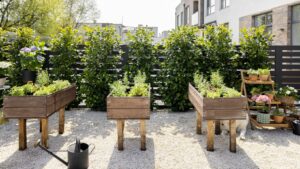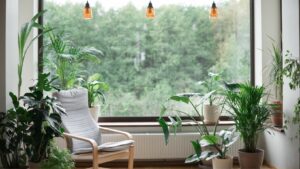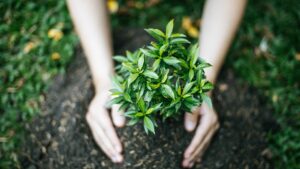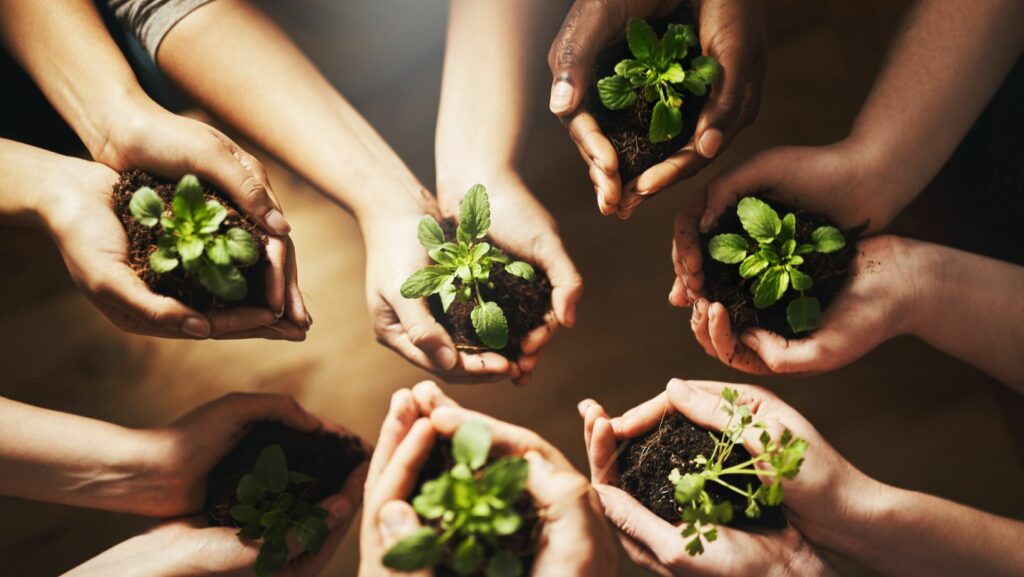Sustainable gardening: it’s not just a buzzword, it’s a lifestyle. As we become increasingly aware of our environmental impact, many are turning to eco-friendly practices in every aspect of life. And what better place to start than our own backyards?
Sustainable Gardening
 Sustainable gardening represents an ecological practice of cultivation. The gardener, in this setting, not only nurture plants but also contributes directly to environmental health. The objective, in essence, becomes two-fold: growing and harvesting organic produce, and building an environmentally friendly garden space.
Sustainable gardening represents an ecological practice of cultivation. The gardener, in this setting, not only nurture plants but also contributes directly to environmental health. The objective, in essence, becomes two-fold: growing and harvesting organic produce, and building an environmentally friendly garden space.
Multiple strategies aid in achieving these goals. Composting kitchen scraps, for instance, results in rich, organic soil enhancer, negating the need for chemical fertilizers. Rainwater harvesting offers a natural watering solution, resilient to drought periods. Enhancing garden biodiversity attracts a wide variety of birds, bees, and insects that play key roles in maintaining a healthy ecosystem.
This approach also underscores resource conservation. Practitioners pursue efficient use of natural resources, reducing waste, creating recycling cycles and thus minimizing their carbon footprint. Thus, sustainable gardening emerges as a significant means of practicing environmental stewardship at an individual level, forming a substantial antidote to prevalent ecological concerns.
Key Principles of Sustainable Gardening
In sustainable gardening, three cardinal practices encompass its thrust: resource conservation, economic efficiency, and ecological balance.
Resource Conservation focuses on maximized use, such as utilizing compost made from kitchen scraps, yard waste, and plant trimmings. For example, compost-rich soil encourages vigorous plant growth, enhancing a garden’s health and productivity.
Economic Efficiency is about optimizing garden output with minimal expenditure. For instance, creating habitats for beneficial insects reduces pest damage without resorting to pricey, chemical-laden pest controls.
Ecological Balance involves preserving and enhancing biodiversity, ensuring the garden can self-sustain and contribute positively to the local ecosystem. An illustration would be attracting a variety of birds and insects, benefiting from natural pest control and pollination services they offer.
Tools for Sustainable Gardening
 Delving into sustainable gardening lies in the adoption of the right tools. Key among these are compost bins and rain barrels. A compost bin aids in waste management, transforming kitchen and garden waste into nutrient-rich compost. Home composting is a viable method for recycling organic matter, potentially reducing the volume of waste sent to landfill by about 30%.
Delving into sustainable gardening lies in the adoption of the right tools. Key among these are compost bins and rain barrels. A compost bin aids in waste management, transforming kitchen and garden waste into nutrient-rich compost. Home composting is a viable method for recycling organic matter, potentially reducing the volume of waste sent to landfill by about 30%.
For promoting biodiversity, a gardener can use native plants and seeds, attracting beneficial insects and local wildlife. Native plants often require less maintenance, conserving water and energy resources.
Additionally, organic fertilizers help maintain soil health and fertility. In contrast to synthetic fertilizers, organic options nourish the soil and plants, enhancing ecological harmony.
Sustainable Gardening Techniques
 Advancing sustainable gardening requires understanding and employing certain techniques. Composting tops the list, turning waste into valuable soil nutrients. Rainwater collection system, a mechanism to harvest rainwater, aids in preserving water resources and maintaining garden lushness. Enhancing biodiversity, achieved by promoting plant variation, serves as a shield against harmful pests and diseases.
Advancing sustainable gardening requires understanding and employing certain techniques. Composting tops the list, turning waste into valuable soil nutrients. Rainwater collection system, a mechanism to harvest rainwater, aids in preserving water resources and maintaining garden lushness. Enhancing biodiversity, achieved by promoting plant variation, serves as a shield against harmful pests and diseases.
Further, use of native plants proves beneficial as they adapt easily to local conditions, needing less water and care. Organic fertilizers, derived from natural materials, enrich soil health, boosting plant growth without adverse environmental effects. Mulching, the application of organic materials on soil surface, offers multiple benefits including moisture retention and weed control.
How to Start a Sustainable Garden
So you’ve learned about sustainable gardening and its importance for resource conservation, economic efficiency, and ecological balance. Now it’s time to put that knowledge into practice. Start by setting up a compost bin and a rain barrel in your garden. They’re vital tools for waste management and water conservation. Next, consider the plants you’ll cultivate. Choose native species and use organic fertilizers to promote biodiversity and soil health. Don’t forget to mulch – it’s a simple step that can have a big impact on your garden’s sustainability. With these techniques, you’ll not only create a thriving garden but also contribute towards a greener future. Remember, every small step counts in our collective responsibility towards the environment.

